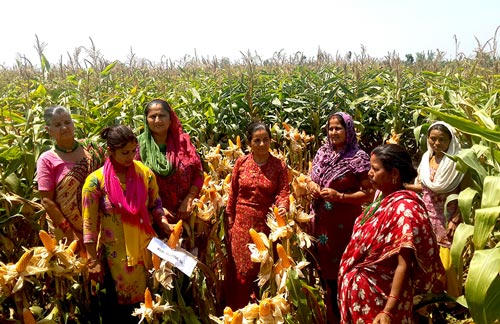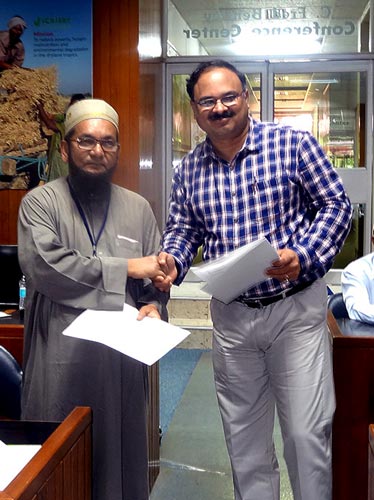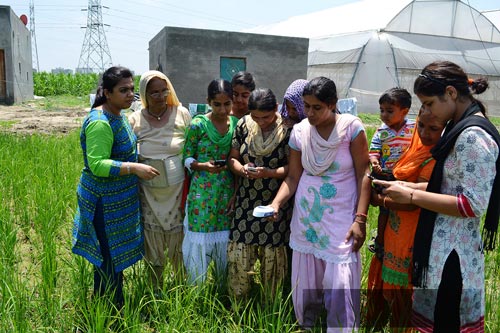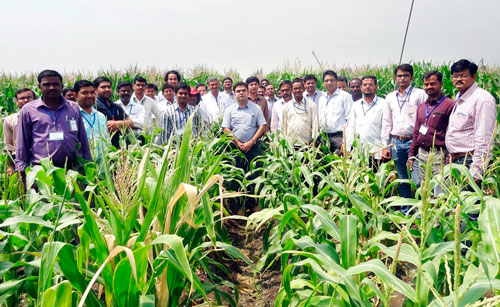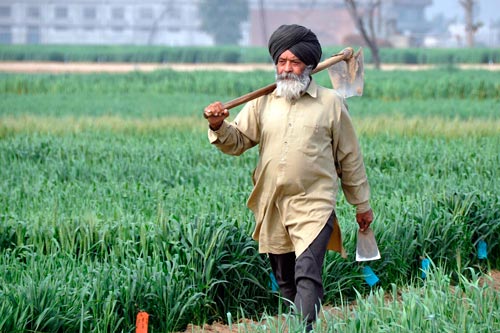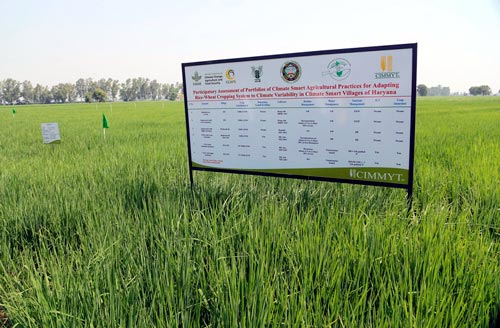Photos courtesy of Anu Raswant
From 28 September to 2 October, CIMMYT Director General Martin Kropff visited different research sites in several states of India. The following reports detail his visit.
CIMMYT Emeritus Director General Dr. Tom Lumpkin receives prestigious 8th MS Swaminathan Award
Dr. Tom Lumpkin receiving the M.S. Swaminathan Award from Dr. M.S. Swaminathan and Dr. Raj Paroda, Chair, Trust for Advancement of Agricultural Sciences. Dr. Martin Kropff, CIMMYT DG, attended the award ceremony.
Dr. Tom Lumpkin, former CIMMYT Director General, received 8th MS Swaminathan Award for Leadership in Agriculture in a glittering ceremony organized by the Trust for Advancement of Agricultural Sciences (TAAS) at the Indian Agricultural Research Institute (IARI), New Delhi, on September 28. This year’s award was a special occasion as the award was presented by Dr. Swaminathan himself. The Award is conferred on individuals “who have done outstanding research work in the field of agriculture, animal sciences, and fisheries.” The first award was given in 2005 by the President of India, Dr. A.P.J. Abdul Kalam, to Dr. Norman E. Borlaug, Nobel laureate who led the development and spread of high-yielding wheat varieties in the developing countries during 1960s and 70s, which culminated in Green Revolution that saved billions of people from starvation.
On this occasion, Dr. Lumpkin said, “I’m humbled and greatly honored by this award. Swaminathan and Borlaug were visionaries who worked together and made their case courageously to the political leaders to get appropriate technologies into farmers’ hands. We must do the same, if South Asia is to provide nutritious food for more than 1 billion people who will live here in 2050, without further degrading land or depleting groundwater.”
While addressing the gathering, Dr. Swaminathan praised the work of Dr. Lumpkin in strengthening wheat and maize research in India and lauded his efforts in establishing the Borlaug Institute for South Asia.
CIMMYT-India Office Inaugurated by Dr. Martin Kropff, CIMMYT Director General, and CIMMYT Senior Management
CIMMYT DG inaugurating the renovated regional office of CIMMYT in India.
Dr. Martin Kropff, along with Drs. John Snape, Tom Lumpkin, Marianne Banziger, H.S. Gupta, Etienne Duvellier and B.S. Sidhu inaugurated the renovated CIMMYT-India office on September 30, 2015 by cutting a ribbon and unveiling a commemorative plaque. A large gathering of the staff from CG centers and ICAR along with Dr. S. Ayyappan, ICAR Director General, were present. Strategically located in the National Agricultural Science Center (NASC) complex, the renovated office can now accommodate 25 staff and has improved facilities. At the gathering, Kropff reiterated the importance of working as ‘One CIMMYT’ and ‘One CG’ to achieve food security in South Asia.
Visit to BISA Research Center at Ladhowal, Punjab
CIMMYT DG inaugurating the solar-powered micro-irrigation system at Ladhowal center of BISA.
CIMMYT DG Dr. Martin Kropf, accompanied by Drs. John Snape, Board Chair CIMMYT; Thomas A. Lumpkin, Ex-DG, CIMMYT; Marianne Banziger, DDG, CIMMYT, Etienne Duveiller, Director Research, CIMMYT-South Asia, and Dr. B.S. Sidhu, Commissioner, Agriculture, Punjab Government, visited BISA’s research center at Ladhowal on October 01, 2015. They were received by Dr. H.S. Gupta, BISA DG, and BISA staff members at the farm. They were taken around to see the research activities. The visiting team was impressed with the state-of-the-art facilities at the farm and the research work being conducted. Dr. Kropff and visiting dignitaries inaugurated a solar-powered micro-irrigation system installed with financial support from the Government of Punjab.
The visiting team evinced keen interest in the experiments on subsurface irrigation in the water-smart block where farmers can save 50-60% water without yield penalty. Kropff was pleased to learn that the latest technology in phenotyping in collaboration with Kansas State University is being used at BISA
DG CIMMYT with staff members of BISA at Ladhowal farm in Ludhiana
and that wheat lines with a 15-17% yield advantage have been selected and passed on to national partners under GWP. This will help increase the overall productivity of wheat in India in general and Punjab state in particular.
Dr. H.S. Sidhu, Senior agricultural engineer, showed various agricultural implements that have been developed at BISA center and have contributed to the adoption of conservation agriculture. Some of them are in great demand not only in India but in neighboring countries like Pakistan and many countries of Africa. At the end of the visit, a presentation summarized the development of Ladhowal farm since it was handed over to BISA. Dr. Kropff commented, “I am impressed with the facilities and high quality of research being conducted at BISA.”
Visit to Farmers’ Fields near BISA’s Ladhowal Center
CIMMYT DG Dr. Martin Kropff and Commissioner, Agriculture, Govt. of Punjab, Dr. B.S. Sidhu interacting with farmers in a climate-smart village near Ladhowal.
During visit to BISA Research Center at Ladhowal, Dr. Martin Kropff, along with CIMMYT’s senior management team, visited farmers’ fields near Ladhowal village and talked with farmers about climate-smart agricultural practices. The farmers showed use of the Green Seeker in rice crop and briefed the team on the conservation agriculture practices adopted by them. Dr. B.S. Sidhu, Commissioner, agriculture, Govt. of Punjab, shared that Punjab Govt. subsidizes the purchase of the Green Seeker so that farmers are encouraged to buy this instrument and save nitrogen.
DG Martin Kropff and Senior Management Visit Punjab Agricultural University, Ludhiana, Punjab
CIMMYT DG visiting rice fields with Dr. B.S. Dhillon, Vice Chancellor, Punjab Agricultural University, Ludhiana.
Dr. Martin Kropff, along with Drs. John Snape, Tom Lumpkin, Marianne Banziger, H.S. Gupta, Etienne Duvellier, and B.S. Sidhu, visited Punjab Agricultural University, Ludhiana, on October 1, 2015. He was received by the Vice Chancellor, Dr. B.S. Dhillon, who took the delegation around the farm and showed the research being conducted at this premiere university of India that was one of the major players in ushering the Green Revolution in India.
Directors of research and extension briefed the team on research on cereals, pulses, oilseeds, and horticultural crops. Dr. Kropff and members of the team showed keen interest in the quality research being pursued at the University.
Visit to Climate-Smart Villages in Haryana, India
CIMMYT DG visiting climate-smart villages in Karnal, Haryana, India.
Dr. Martin Kropff, CIMMYT DG, visited the CIMMYT-CCAFS participatory strategic research and learning platform in Taraori, Haryana, along with Drs. John Snape, Board Chair CIMMYT, Dr. Thomas A. Lumpkin, former CIMMYT DG, Marianne Banziger, DDG, CIMMYT, H.S. Gupta, BISA DG, and Etienne Duveiller, Director of Research, CIMMYT-South Asia, on October 02, 2015. Dr. M.L. Jat, Senior Cropping System Agronomist and Coordinator of CCAFS South Asia, explained the research portfolio of CIMMYT’s Sustainable Intensification Program in northwest India. He explained how layering of resource-efficient technologies can help in adaptation to frequent climate and biological changes under a particular set of agroecological conditions. During the visit to the climate-smart villages, the overall approach of developing, adapting, and scaling CSA through innovation and learning platforms in a participatory mode involving youth and women was highlighted. The portfolios of CSA interventions (water, energy, carbon, nutrient, weather and knowledge based) are chosen to suit local agroclimatic conditions and are being implemented through innovative partnerships with farmers and farmer cooperatives, to build resilience to climate change, and increase productivity and income. Dr. Martin Kropff sent a message to Dr. Bruce Campbell, CCAFS Director, saying:
“Dear Bruce, I just visited the climate-smart village project of M.L. Jat of CIMMYT in Haryana. Very impressive and a great enthusiasm with the farmers. Really exceptional work. I hope we can keep up the good work in the new phase of CCAFS.” In his immediate response, Bruce said, “Hi, Martin, I agree. It is great work.”
CIMMYT DG Martin Kropff and CIMMYT Senior Management Meet the Honorable Chief Minister, Government of Punjab
CIMMYT DG apprising the Hon’ble Chief Minister, Govt. of Punjab, about the research activities undertaken at BISA Center in Ladhowal.
Dr. Martin Kropff, CIMMYT DG, accompanied by Drs. John Snape, Board Chair; Thomas A. Lumpkin, former CIMMYT DG; Marianne Banziger, CIMMYT DDG, and H.S. Gupta, BISA DG, paid a courtesy visit on the Hon’ble Chief Minister of Punjab Shri Parkash Singh Badal on October 02, 2015. Dr. Kropff apprised the Hon’ble Chief Minister about the infrastructure development and research activities going on at the Ladhowal center of BISA. The Chief Minister expressed keen interest in the activities of BISA and urged CIMMYT management to take the technology developed at BISA farm to farmers’ fields.
While thanking the team for sparing time to visit him, the Chief Minister promised full support to BISA and hoped that BISA will prove to be a milestone in heralding a second Green Revolution in India.
Visit to the Research Platform at CSSRI, Karnal, Haryana, India
CIMMYT DG visiting the research platform at ICAR’s Central Soil Salinity Research Institute, Karnal, Haryana.
The team, comprised of Drs. Martin Kropff, DG, CIMMYT, John Snape, Board Chair CIMMYT, Thomas A. Lumpkin, former CIMMYT DG, Marianne Banziger, CIMMYT DDG, H.S. Gupta, BISA DG, and Etienne Duveiller, Director of Research, CIMMYT-South Asia, visited the CSSRI-CSISA Research Platform at Karnal, Haryana, on Oct. 2, 2015. Dr. D.K. Sharma, Director, ICAR-CSSRI, welcomed CIMMYT’s new DG and senior management and highlighted the CIMMYT/CSSRI partnership and how important it is in relation to salinity and food security under the emerging climate change scenario. He stressed sustainable intensification and climate-smart agriculture for efficient resource management to address issues such as soil quality, labor shortages, water, and energy in the current changing climate in Indian IGP. He suggested to Dr. Kropff that the research platform on sustainable intensification initiated under CSISA at CSSRI should be continued for the next few years through support from CIMMYT because this platform acts as a production observatory to monitor the long-term changes and helps to give future research direction. Dr. H.S. Jat, CIMMYT senior scientist and platform coordinator, explained the outputs of CIMMYT’s on-going research activities being carried out in collaboration with CSSRI, Karnal.
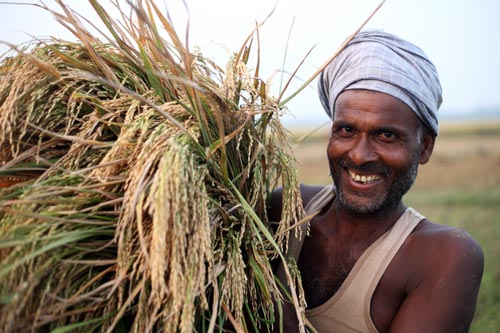
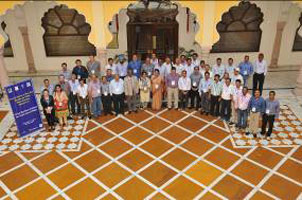
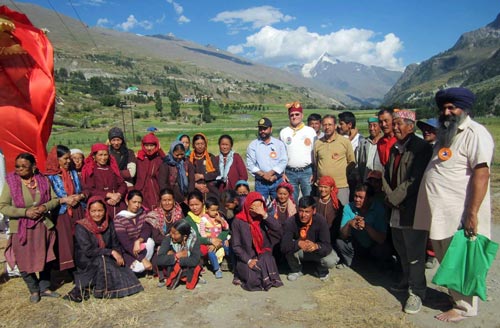
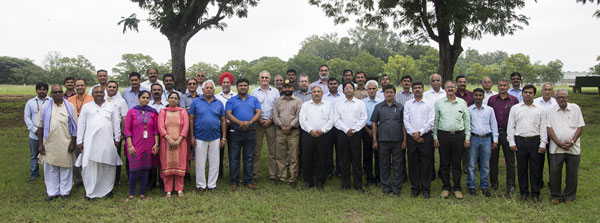
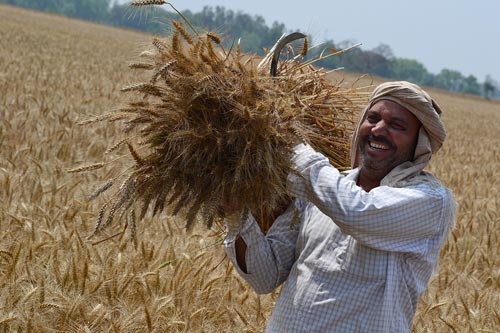
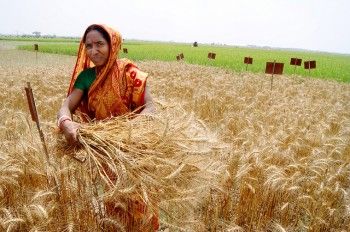
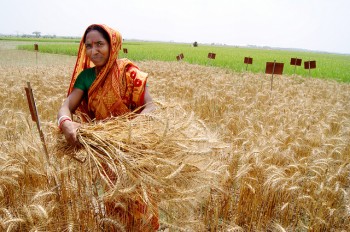 CIMMYT Director General Martin Kropff speaks on the topic of ‘Wheat and the role of gender in the developing world’ prior to the 2015 Women in Triticum Awards at the Borlaug Global Rust Initiative Workshop in Sydney on 19 September.
CIMMYT Director General Martin Kropff speaks on the topic of ‘Wheat and the role of gender in the developing world’ prior to the 2015 Women in Triticum Awards at the Borlaug Global Rust Initiative Workshop in Sydney on 19 September.